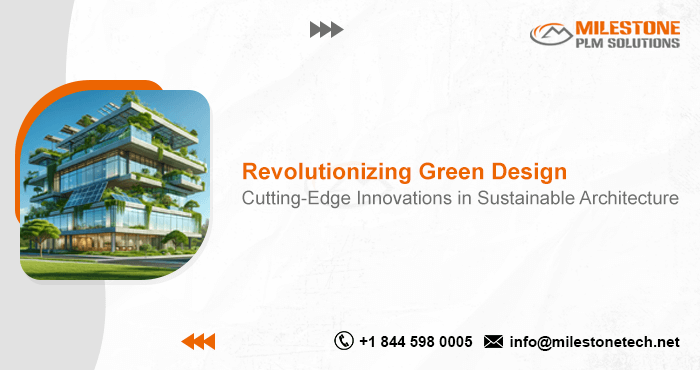Revolutionizing Green Design : Cutting-Edge Innovations in Sustainable Architecture

In recent years, the architecture and construction industries have witnessed a paradigm shift towards sustainable design. As concerns about climate change, resource depletion, and environmental degradation mount, sustainable architecture has emerged as a vital solution. This article delves into the cutting-edge innovations revolutionizing green design, emphasizing how sustainable architecture is reshaping the built environment.
The Imperative for Sustainable Architecture
The global push for sustainability is driven by the urgent need to reduce carbon footprints, conserve natural resources, and create healthier living spaces. Buildings are responsible for a significant portion of global energy consumption and greenhouse gas emissions. Sustainable architecture seeks to mitigate these impacts by integrating eco-friendly practices throughout the lifecycle of a building, from design and construction to operation and demolition.
Innovations in Sustainable Architecture
Green Building Materials
One of the cornerstones of sustainable architecture is the use of green building materials. Traditional construction materials like concrete and steel have high environmental costs, including carbon emissions and energy consumption. In contrast, sustainable architecture prioritizes materials that are renewable, recyclable, and have a low environmental impact. Examples include:
- Bamboo: A rapidly renewable resource, bamboo is strong, lightweight, and versatile. It can be used for structural elements, flooring, and finishes.
- Recycled Steel: Using recycled steel reduces the need for virgin materials and minimizes energy consumption in the manufacturing process.
- Hempcrete: A bio-composite made from the inner fibers of the hemp plant, hempcrete is an excellent insulator and has a negative carbon footprint.
Energy-Efficient Design
Energy efficiency is a fundamental aspect of sustainable architecture. Innovative design strategies and technologies are employed to minimize energy consumption and maximize the use of renewable energy sources. Key innovations include:
- Passive Solar Design: This involves strategic placement of windows, insulation, and thermal mass to harness natural sunlight for heating and lighting, reducing the need for artificial energy sources.
- High-Performance Insulation: Advanced insulation materials, such as aerogel and vacuum-insulated panels, significantly reduce heat loss and gain, enhancing the building’s energy efficiency.
- Net-Zero Energy Buildings: These structures generate as much energy as they consume, often through solar panels, wind turbines, and other renewable energy systems.
Smart Building Technology
The integration of smart technology in sustainable architecture enhances energy management and overall building performance. Smart buildings utilize sensors, automation, and data analytics to optimize energy usage, indoor climate, and resource management. Key components include:
- Building Management Systems (BMS): These systems monitor and control building functions such as heating, ventilation, air conditioning (HVAC), lighting, and security to ensure optimal performance and energy efficiency.
- Internet of Things (IoT): IoT devices collect and analyze data on energy usage, occupancy patterns, and environmental conditions, enabling real-time adjustments and predictive maintenance.
- Smart Glass: This innovative material can change its opacity or tint in response to sunlight, reducing the need for artificial lighting and heating.
Green Roofs and Living Walls
Green roofs and living walls are transformative elements in sustainable architecture, contributing to energy efficiency, biodiversity, and aesthetic appeal. These features offer numerous benefits:
- Insulation: Green roofs provide natural insulation, reducing heating and cooling costs.
- Stormwater Management: They absorb rainwater, reducing runoff and mitigating the risk of flooding.
- Biodiversity: Green roofs and walls create habitats for urban wildlife, enhancing local ecosystems.
- Air Quality: Plants filter pollutants from the air, improving indoor and outdoor air quality.
Water Conservation Technologies
Sustainable architecture also addresses the critical issue of water conservation. Innovative technologies and design practices reduce water usage and promote recycling. Key solutions include:
- Rainwater Harvesting: Systems that capture and store rainwater for non-potable uses such as irrigation and toilet flushing.
- Greywater Recycling: Treating and reusing wastewater from sinks, showers, and washing machines for landscaping and other applications.
- Low-Flow Fixtures: Advanced fixtures and appliances that reduce water consumption without compromising performance.
The Future of Sustainable Architecture
The future of sustainable architecture is bright, with ongoing research and development driving continuous innovation. Emerging trends include:
- Biophilic Design: Incorporating natural elements into building design to enhance occupant well-being and productivity.
- Circular Economy: Designing buildings for disassembly and material reuse, minimizing waste and promoting sustainability.
- Carbon-Neutral Construction: Striving for construction processes that have zero net carbon emissions through the use of sustainable materials, renewable energy, and carbon offsetting.
Conclusion
Sustainable architecture is revolutionizing the way we design, construct, and operate buildings. By embracing cutting-edge innovations such as green building materials, energy-efficient design, smart technology, green roofs, and water conservation, architects and builders are creating structures that are not only environmentally friendly but also economically viable and socially responsible. As the world continues to grapple with environmental challenges, sustainable architecture will play an increasingly crucial role in shaping a sustainable and resilient future.
Follow Milestone PLM Solutions for AEC Industry Updates, CAD Tips and Global Construction News.
Milestone PLM Solutions with its exclusive delivery center in India is a global CAD, BIM outsourcing partner serving the needs of the AEC industry since 2004. MILESTONE focuses on the unique needs of clients and believe in tackling real-life problems with efficiency, smooth and ease.
The MILESTONE team can assist you with DD Set, CD Set, BIM Modeling, Rendering, walk through and more. We support multiple BIM software including AUTOCAD REVIT, Architecture cad, Cabinet Vison, Vector works etc. Our approach is to provide a dedicated team for each customer over ongoing project and deliver the quality output consistently.
With our state of art technology and large talent pool of Engineers & Architects, we are developing best in class solutions for our customers across the globe. We align with your culture and values to form unbreakable partnerships and are primed for success with over 100 employees and 150 customers in the US, Europe, India, and Asia.
You can email us at info@milestonetech.net and can log in to our website www. milestonetech.net to know more about our services and our work portfolio or contact us on +1-844-598-0005
